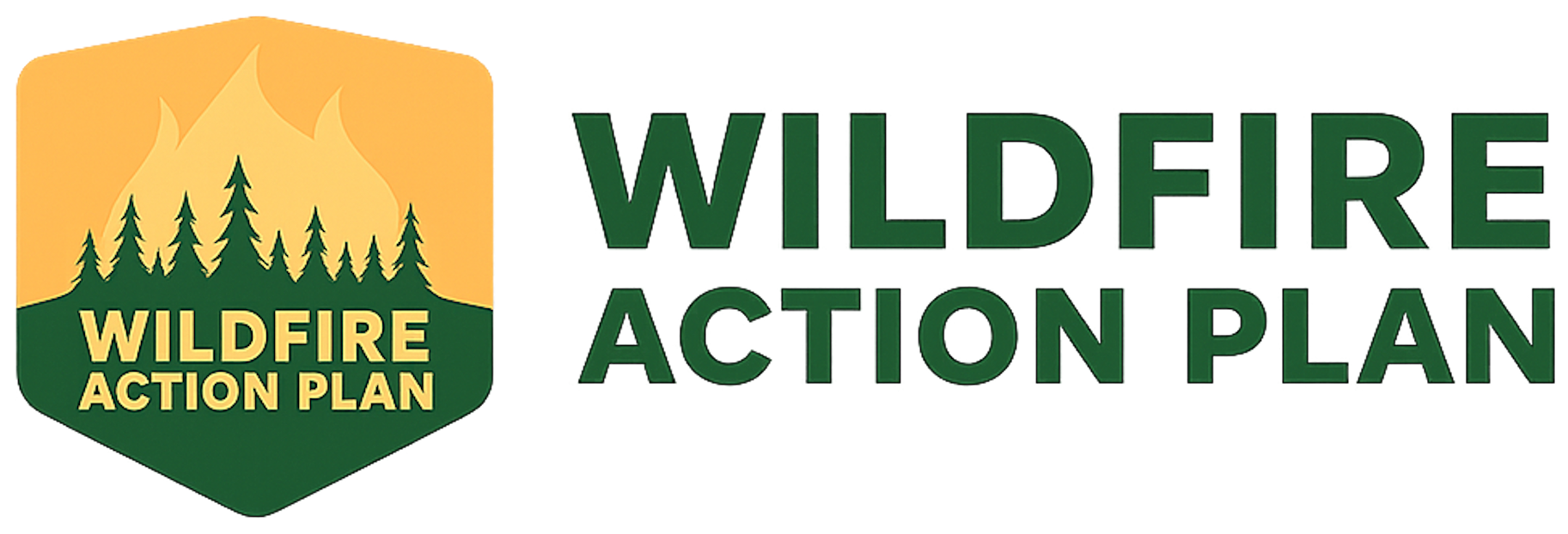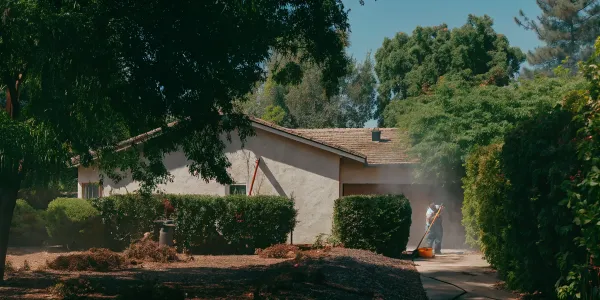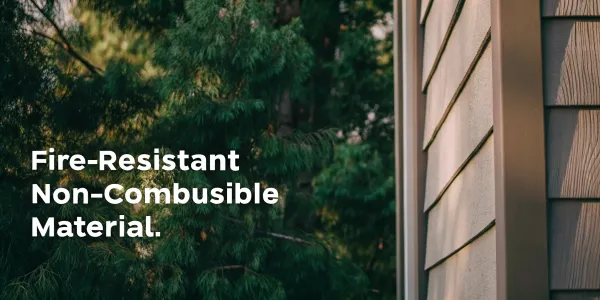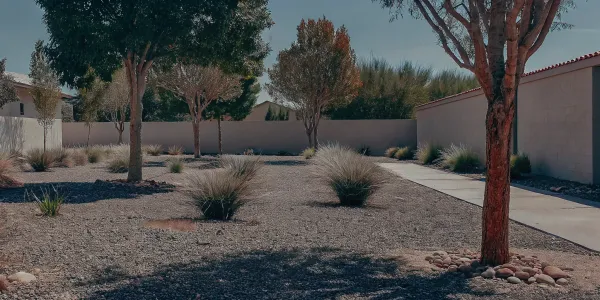How to Assess Your Home's Wildfire Vulnerability
Learn how to assess my home's wildfire vulnerability with practical steps for risk evaluation, defensible space, and home hardening to protect your property.
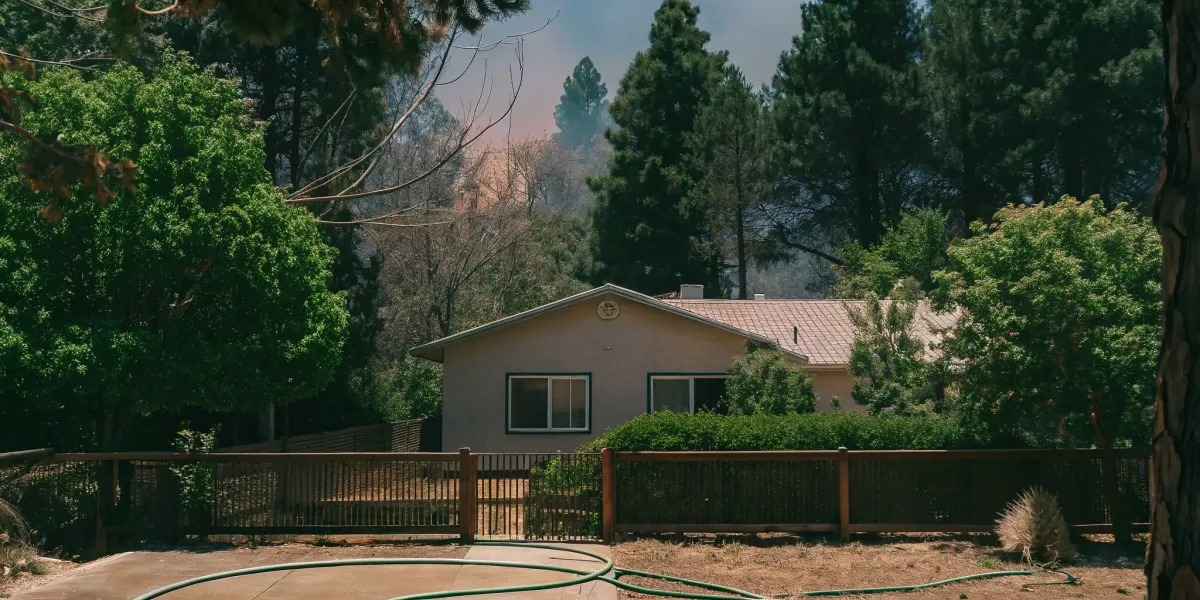
The biggest threat in a wildfire isn’t always the giant wall of flames you see in the news. More often, the real danger comes from a blizzard of tiny, wind-blown embers that can travel a mile or more ahead of the fire itself. These embers are relentless, searching for any small vulnerability to ignite—a pile of dry leaves in a gutter, an unscreened vent, or a patch of flammable mulch next to your foundation. This is why a thorough evaluation is so critical. When you decide to assess my home's wildfire vulnerability, you’re not looking for one big weakness; you’re hunting for all the small, overlooked details that could put you at risk. This process is the foundation for building a truly hardened home.
Key Takeaways
- Understand Your Specific Risk to Gain Control: A detailed property assessment turns vague anxiety into an actionable plan. It shows you exactly where to focus your efforts and gives you the documentation needed to have productive conversations with your insurance provider.
- Create Defensible Space in Zones: Your most effective defense is a buffer zone. Start with the critical 0-5 foot "ember-free zone" by removing all flammable materials, then work outward to thin vegetation and slow a fire's approach.
- Prioritize Home Hardening Against Embers: Embers are the primary cause of home ignition. Focus on the most vulnerable entry points first: replace your roof with Class A materials, cover all vents with 1/8-inch metal mesh, and upgrade to dual-pane windows.
Why Assess Your Home's Wildfire Risk?
If you’ve received a non-renewal notice or seen your insurance premium skyrocket, you already know that your home’s wildfire risk is more than a hypothetical threat—it’s a financial reality. Understanding your specific vulnerabilities is the first step toward taking back control. An assessment isn't about creating fear; it's about creating a clear, actionable roadmap. It helps you pinpoint exactly where your property is most exposed so you can invest your time and money into fixes that actually matter to insurers and, more importantly, could save your home.
Instead of guessing what to do, a proper risk assessment allows you to build a strategic defense. You can identify the weak points—from the type of mulch in your flowerbeds to the vents on your roof—and address them one by one. This proactive approach not only makes your property more resilient but also demonstrates to insurance carriers that you are actively managing your risk. In a market where insurers are pulling back, showing you’ve taken concrete steps can make all the difference. Creating personalized wildfire action plans starts with knowing exactly what you’re up against.
What Makes Your Home Vulnerable?
Your home’s vulnerability often comes down to the details in your yard and on your house itself. The first 30 feet around your home, known as the Home Ignition Zone, is critical. Flammable plants like juniper, overgrown shrubs, and dry grasses can act as a wick, carrying fire directly to your walls. Even the type of mulch you use matters; combustible materials like shredded bark can smolder for hours. CAL FIRE’s guide to Fire-Smart Landscaping is a great resource for choosing safer alternatives. The goal of managing your landscape is to interrupt a fire’s path and reduce its intensity, forcing it from the treetops down to the ground where it’s easier for firefighters to control.
How Wildfire Risk Affects Your Insurance
Insurance companies use sophisticated models to calculate your property’s risk, and your premium and eligibility depend heavily on their findings. They look at your location within official Fire Hazard Severity Zones, your property’s vegetation, and the slope of your land. When you understand these factors, you can take targeted steps to lower your risk profile. Clearing defensible space, hardening your home with fire-resistant materials, and documenting your efforts can directly impact your ability to find and afford coverage. In today’s tough insurance market, proving you’re a lower risk is one of the most powerful tools you have.
Common Wildfire Risk Myths, Debunked
Many homeowners believe that a wildfire has to be a massive wall of flames to pose a threat, but the reality is often quieter and more insidious. The biggest danger often comes from wind-blown embers that can travel a mile or more ahead of the fire itself. These embers can get trapped in gutters full of leaves, lodge in vents, or ignite flammable plants right next to your house. Another common myth is that you can create a "fireproof" landscape. No plant is truly fireproof, but smart fire-resistant designs and careful placement can dramatically slow a fire’s spread and prevent embers from igniting materials that could lead to fire entering a home.
How to Evaluate Your Property's Risk Level
Understanding your home's specific wildfire risk is the first step toward protecting it. It’s not just about what ZIP code you live in; it’s about your home’s construction, the landscape surrounding it, and the specific environmental factors at play. A clear-eyed assessment helps you prioritize your efforts, make smarter financial decisions, and have productive conversations with your insurance provider. This evaluation gives you a roadmap for action, turning anxiety into a concrete plan.
Insurers want to see that you are actively managing your risk, and a thorough assessment is the best way to demonstrate that. The goal is to identify vulnerabilities in two key areas: the physical space around your home, known as your defensible space, and the structure of your home itself, which is addressed through home hardening. By looking at your property through this lens, you can start to see where embers could land and ignite fuel, or where flames could find an easy entry point into your house. This process breaks a big, intimidating problem into smaller, manageable tasks. Instead of worrying about "wildfire," you can focus on specific actions like clearing debris from your gutters or replacing a vent.
Start with Official Risk Assessment Tools
You don’t have to start from scratch. Many states provide official online tools to give you a baseline understanding of your area's risk. For California homeowners, the best place to start is with the state's official resources. The California Office of the State Fire Marshal maintains Fire Hazard Severity Zone maps that classify regions based on factors like fuel, slope, and fire weather. Finding your property on this map is a critical first step. These tools provide a high-level view, helping you understand the general threat level before you zoom in on your specific property’s vulnerabilities.
When to Get a Professional Evaluation
If official maps raise concerns or you’re feeling overwhelmed, a professional evaluation can provide much-needed clarity. A certified wildfire risk assessor can walk your property, identify specific weaknesses you might overlook, and give you a prioritized list of actions. This is especially valuable if you’ve received a non-renewal notice from your insurer, as a professional report can demonstrate your proactive efforts to mitigate risk. Research shows that even a few key improvements can dramatically reduce the chances of losing your home. An expert can help you identify the most impactful upgrades for your budget and property.
Document These Key Areas
Walk your property with a critical eye and a notepad. Your goal is to identify potential fuel sources that could carry a fire directly to your home. Pay close attention to your landscaping, especially within the first 30 feet of your house. Are there dead leaves piled up against the siding? Do you have flammable plants like juniper or cypress under windows? Document the condition of your deck, fences, and any outbuildings. Using fire-resistant plants and removing flammable debris are foundational steps. This detailed inventory will become the basis for your defensible space and home hardening checklist.
Consider Your Local Risk Factors
Your home’s risk isn’t just about your property line; it’s also shaped by the surrounding environment. Take note of the topography. Does your home sit on a steep slope, where fire can travel much faster? What is the dominant vegetation in your neighborhood—is it dense forest, dry grass, or thick chaparral? California’s dry climate and seasonal winds, like the Santa Anas, create conditions where fires can spread with terrifying speed. Understanding these local factors helps you grasp the full picture of your risk and explains why creating defensible space and hardening your home are so critical for your survival and insurability.
How to Create an Effective Defensible Space
Creating a defensible space is one of the most effective actions you can take to protect your home from wildfire. Think of it as a buffer zone you create between your house and the surrounding vegetation. This area is designed to slow or stop the spread of wildfire and protect your home from catching fire—either from direct flame contact or from flying embers. A well-maintained defensible space also gives firefighters a safer area to work in if they need to defend your home.
For insurers, a clear defensible space is a powerful signal that you are actively managing your property’s risk. It’s a tangible improvement they can see and measure, often weighing heavily in their decision to offer or renew a policy. The concept is straightforward and is generally broken down into three distinct zones, starting from your house and moving outward. Each zone has a specific job and requires different actions to reduce the fuel available to a fire. Taking a systematic, zone-by-zone approach makes the task manageable and highly effective. By clearing and maintaining these areas, you directly lower your home’s vulnerability and increase its chances of survival.
Clear the Immediate Zone (0-5 feet)
This area, often called the "ember-free zone" or "noncombustible zone," is the most critical space to manage. Your goal here is to eliminate anything that could ignite from wind-blown embers, which are a primary cause of home ignition during a wildfire. Start by removing all dead leaves, pine needles, dry grass, and other flammable debris from the ground, roof, and gutters. Use hardscaping materials like gravel, pavers, or concrete within the first five feet of your home’s foundation.
Avoid using bark or rubber mulch, as it can easily catch fire. Any flammable items stored near the house—including firewood piles, patio furniture with combustible cushions, brooms, and recycling bins—should be moved at least 30 feet away. Finally, trim any tree branches that hang over your roof or are close to the chimney.
Manage the Intermediate Zone (5-30 feet)
In the space between 5 and 30 feet from your home, the focus shifts from elimination to reduction. The goal is to create landscaping that slows a fire’s spread and keeps flames small. You can do this by creating separation between trees, shrubs, and other vegetation. Prune the lower branches of mature trees up to a height of 6 to 10 feet from the ground to prevent a ground fire from climbing into the canopy.
Choose well-irrigated, fire-resistant plants and arrange them in spaced-out "islands" rather than dense, continuous beds. Keep your lawn mowed to a height of four inches or less and remove any dead or dying plants. This careful management ensures that if a fire enters this zone, it remains on the ground and burns with low intensity.
Maintain the Extended Zone (30-100 feet)
The extended zone, reaching up to 100 feet from your home (or to your property line), is your first line of defense. The objective here is to interrupt the fire’s path and reduce its energy before it gets close to your house. This doesn't mean you need to clear-cut the entire area. Instead, focus on thinning the vegetation to reduce the overall fuel load.
Remove dead trees, fallen branches, and dry undergrowth. Create space between larger trees by removing smaller, less healthy ones. This thinning process helps prevent a fire from jumping from treetop to treetop—a dangerous phenomenon known as a crown fire. By managing this zone, you can slow a wildfire down and force it to the ground, where it is less intense and easier for firefighters to control.
Implement Smart Vegetation Control
Your landscaping choices have a direct impact on your home’s vulnerability. Beyond maintaining the three zones, smart vegetation control is key. Always avoid combustible mulches like bark or pine straw in the immediate zone around your home. When planting, be strategic about placement. Never place shrubs or trees directly under windows, vents, or eaves, as flames from burning vegetation in these spots can provide a direct path for fire to enter your home.
The foundation of a fire-safe landscape is choosing the right plants. While no plant is truly "fire-proof," many species are more resistant to ignition and burn with less intensity. Opt for plants with high moisture content and low levels of flammable resins. A well-designed, fire-smart landscape can be both beautiful and a critical part of your home's defense system.
Ensure Clear Access for Emergency Responders
An effective defensible space is useless if firefighters can't get to your property to defend it. Emergency access is a crucial, and often forgotten, component of wildfire preparedness. Make sure your street address is clearly marked with large, reflective numbers that are visible from the road, day or night. Your driveway and any access roads must be wide enough for fire engines and other large vehicles to pass through—typically at least 10 to 12 feet wide with a vertical clearance of 15 feet.
Clear away any overgrown vegetation along the sides of your driveway. It’s also important that emergency vehicles have enough space to turn around. Ensuring clear access not only helps protect your home but also ensures the safety of the first responders working to save it.
Which Home Hardening Methods Matter Most?
While creating defensible space manages the vegetation around your home, home hardening focuses on the structure itself. The goal is to make your house more resistant to the primary threat during a wildfire: embers. These small, burning pieces of debris can travel a mile or more ahead of the fire front, landing on or in your home and igniting it.
Some home hardening projects provide more protection than others. Insurers are increasingly looking for specific upgrades when they assess a property’s risk. Focusing on the most vulnerable parts of your home first is the most effective way to protect your family and your investment. These actions can make a critical difference in whether your home survives a wildfire and can help you maintain your insurance coverage.
Secure Your Roof and Gutters
Your roof is your home’s largest surface, making it a prime target for falling embers. If you have an old wood-shake roof, replacing it is the single most important home hardening project you can undertake. Opt for a Class A fire-rated roof made of materials like composite shingles, metal, or tile. While this is a significant investment, it’s one that insurers value highly.
Equally important are your gutters, which can trap flammable debris like pine needles and leaves. This buildup essentially creates a line of kindling along your roof’s edge. Clean your gutters regularly, especially before fire season begins. To make maintenance easier and more effective, consider installing non-combustible metal gutter guards that block debris while allowing water to flow through.
Strengthen Your Windows, Doors, and Vents
Embers can enter your home through surprisingly small openings. Windows are particularly vulnerable because radiant heat can shatter single-pane glass. Upgrading to dual-pane windows with tempered glass on the exterior pane provides a much stronger barrier. Also, check that all doors, including your garage door, have tight-fitting seals to prevent embers from blowing inside.
Vents are another critical entry point. Standard mesh screens on attic, foundation, and soffit vents are often too large to stop wind-blown embers. You should retrofit all vents with 1/8-inch metal mesh screening. Remember that landscaping choices matter here, too; as experts note, "Planting beneath or near sliding glass doors, chimneys, vents, and windows increases the risk of fire entering a home."
Choose Fire-Resistant Building Materials
The materials your home is built with play a huge role in its ability to withstand a wildfire. If your home has wood or vinyl siding, it’s highly combustible. When it’s time to replace it, choose non-combustible options like stucco, fiber cement, or brick. These materials resist ignition and can stop a fire from spreading up the walls of your house.
This principle extends to the ground right next to your home. According to CAL FIRE, you should avoid using combustible mulches like shredded bark or pine straw within the first five feet of your foundation. Instead, create a beautiful, fire-resistant perimeter with non-combustible materials like gravel, pavers, or rock. This simple change removes a direct fuel source from your home’s edge.
Protect Your Deck and Fences
A wooden deck or fence attached to your house can act like a wick, carrying fire directly to your walls. If you’re building a new deck, use fire-resistant materials or treated wood. For an existing deck, you can improve its resilience by enclosing the underside with 1/8-inch wire mesh to keep embers out and clearing all flammable vegetation and items from underneath it.
For fences, the most vulnerable point is where they connect to your house. Consider replacing the five feet of fencing closest to your home with a non-combustible section, like a metal gate. This creates a firebreak that can stop a fire from advancing along the fence line. Proper landscape management around these structures is also key to reducing risk.
Your Essential Home Hardening Checklist
Home hardening isn’t a single project but an ongoing process of maintenance and upgrades. Education and consistent upkeep are the foundation of a fire-safe home. Use this checklist to track your progress and identify your next steps.
- Roof: Class A fire-rated materials.
- Gutters: Cleaned regularly and covered with non-combustible guards.
- Vents: Covered with 1/8-inch metal mesh.
- Windows: Dual-pane with tempered glass.
- Siding: Built with non-combustible materials like fiber cement or stucco.
- Decks: Made from fire-resistant materials and clear of debris underneath.
- Fences: A non-combustible section connects to the house.
Keeping track of these improvements is crucial, especially when communicating with your insurance provider. A personalized Wildfire Action Plan can help you document your efforts and create a clear, actionable path toward a safer, more resilient home.
Related Articles
- How to Find Your Wildfire Vulnerability Score
- A Step-by-Step Home Wildfire Risk Assessment
- Wildfire Risk Insurance: A Complete Guide
Frequently Asked Questions
This all sounds expensive. Where should I start if I have a limited budget? Start with the tasks that cost more in time than in money. The most critical area is the first five feet around your home. Clearing this "ember-free zone" of all flammable materials—like bark mulch, dead leaves, and firewood—is one of the most effective actions you can take, and it's often free. Regularly cleaning your roof and gutters is another high-impact, low-cost task. After that, focus on retrofitting your vents with 1/8-inch metal mesh, which is a relatively inexpensive project that closes off a major entry point for embers.
What's the real difference between 'defensible space' and 'home hardening'? Think of it this way: defensible space is about managing your yard, while home hardening is about strengthening your house. Defensible space focuses on clearing and managing vegetation to slow a fire's approach and reduce its intensity. Home hardening involves upgrading the physical structure of your home—like the roof, vents, and windows—to make it more resistant to ignition from flying embers. Both are essential, as they work together to create a comprehensive defense system for your property.
Will making these changes guarantee that I can keep my insurance? While there are no guarantees in today's challenging insurance market, taking these steps is the single most powerful thing you can do to improve your situation. Proactively managing your wildfire risk makes your property a much lower risk for carriers. It demonstrates that you are a responsible homeowner and can significantly increase your chances of getting or keeping a policy. It shifts you from being a passive victim of market trends to an active participant in protecting your home.
How do I prove to my insurer that I've done all this work? Documentation is key. Take clear before-and-after photos of your property as you complete defensible space and home hardening projects. Keep a detailed file with receipts for any materials you purchased or professional services you hired, such as tree trimming or a new roof installation. A professional wildfire risk assessment can also provide a formal report that outlines your home's vulnerabilities and the improvements you've made, which can be a powerful tool when speaking with your agent.
Is creating a defensible space a one-time project? No, it's an ongoing commitment, just like any other type of home and yard maintenance. Vegetation grows back, and leaves and pine needles will accumulate again. Plan to walk your property and perform upkeep at least once or twice a year, especially before the start of your local fire season. Treating it as a regular part of your homeownership routine ensures your defenses are always ready and effective.
